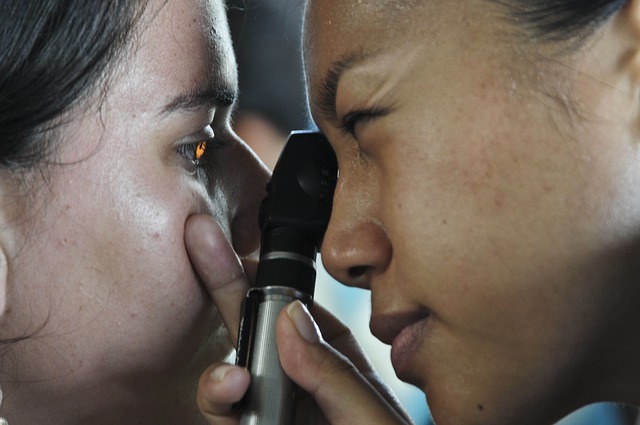Doctors face challenges in diagnosing Borrelia miyamotoi
Life seemed simpler for doctors treating Lyme disease before the discovery of numerous pathogens in ticks. The Centers for Disease Control and Prevention (CDC) now reports that “a single tick can transmit multiple pathogens, including bacteria, viruses, and parasites.” [1] In fact, between 2004 and 2016, the CDC identified 7 new tick-borne microbes capable of infecting humans.
Lyme disease causes double vision: case report
The Lyme spirochete Borrelia burgdorferi can invade the central nervous system causing neuroborreliosis. The most common symptoms include headaches, neck stiffness, facial palsy, and peripheral neuropathy. But the disease can, on rare occasions, also cause eye-related problems. “We present a case of neuroborreliosis manifesting with diplopia [double vision],” Dixit and colleagues write. [1]
Move over nymphal ticks, larval deer ticks now pose a threat
The blacklegged tick has four life stages - egg, larva, nymph and adult. After it hatches, the tick must eat a blood meal (host) at every stage in order to survive. Researchers have long believed that adult female ticks could not transfer pathogens to their eggs. Therefore, larval ticks were considered pathogen-free and harmless. A new study, however, sheds light on disease transmission between life stages and suggests that we take these tiny, microscopic larvae a bit more seriously.
7 tick-borne pathogens reported in my home state of Minnesota
I left Minnesota in 1982 to begin a medical residency in New York. At that time, I had no knowledge of tick-borne pathogens existing in my home state, let alone the seven that are now being reported. [1] I have treated patients with Lyme disease and associated illnesses for the past 31 years, and have family members in Minnesota who have become ill from tick-borne diseases, so this study and its findings are of particular interest.
Case demonstrates importance of follow-up with Lyme disease patients
A recent case report of a 75-year-old Chinese man with Lyme disease highlights the importance of following-up with patients. The man, who was admitted to St. John’s Riverside Hospital in Yonkers, NY, did not exhibit the typical symptoms of Lyme disease. And, initial laboratory tests were negative.
Doctors warned to be vigilant for Lyme disease in Tennessee
Eastern Tennessee, which encompasses the Tennessee Valley, has long been considered a non-endemic region for Lyme disease. Before 2006, the blacklegged I. scapularis tick, was unreported in this area. [1] Several years later, this all changed.
Lyme disease mimics autoimmune disorder in elderly woman
Dermatomyositis (DM) is a serious autoimmune condition typically requiring immunosuppressive therapy. In the journal Cureus, the authors describe the case of a 76-year-old-female with a DM-like presentation who responded to antibiotic treatment for Lyme disease. [1]
Infectious disease clinician proposes changing the name of Lyme disease
In a commentary published in the American Journal of Medicine, Dr. Gary Wormser from New York Medical College proposes changing the name of Lyme disease to Borrelia burgdorferi Senso Lato (Bbsl). [1] Such a move, he says, would be in the best interest of patients and health care practitioners.
When should you worry about ticks in your neighborhood?
Ever wonder if you should worry about ticks in your neighborhood? In a recent study, published in the journal Healthcare, researchers examined tick density and infection rates in residential areas located in the Southern Tier region of upstate New York. [1] They focused on specific areas, referred to as “built environments,” which included parks, gardens, playgrounds, school campuses and neighborhood backyards.
Lyme disease causes vision loss in 46-year-old woman
There have been several case reports linking Lyme disease with eye problems, including a loss of vision. In a study by the Mayo Clinic, researchers concluded that "although ocular involvement can be self-limited, delays in diagnosis may result in vision impairment and even blindness." [1]












